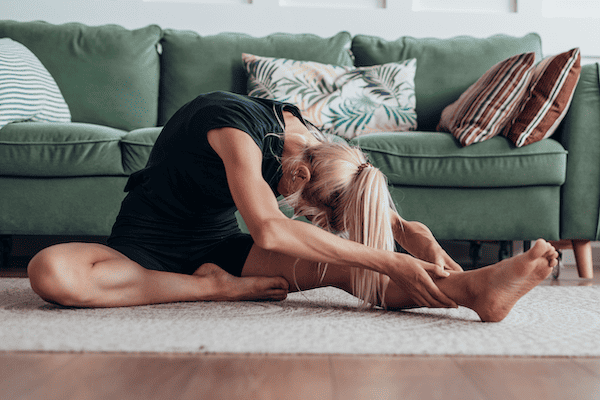
People aren’t made to sit all day, but nowadays, many of us do. This can lead to Upper Cross Syndrome, discussed in a previous blog post, which impacts your upper body and can cause pain in your neck, shoulders, chest, and upper back. It can also result in Lower Cross Syndrome, which affects your lower body and usually causes lower back pain. Fortunately, with the right Lower Cross Syndrome yoga techniques, most people are able to overcome this issue.
I’m Brandt Passalacqua, the Co-Founder and Lead Teacher of Breathing Deeply Yoga Therapy. My mission is to make therapeutic yoga techniques more accessible to others. Whether you have this syndrome yourself or simply want to help clients who have it, keep reading to learn more about this condition, its causes and symptoms, and how to use yoga for Lower Cross Syndrome.
If you’re ready to go further, those who are suffering from Lower Cross Syndrome are welcome to seek one-on-one help online from myself or another yoga therapist I’ve trained. Those who want to learn to help others heal with yoga are encouraged to look into our yoga therapy training programs.
Table of Contents:
Lower Cross Syndrome (LCS) is a health condition characterized by an imbalance of muscle strength around the pelvic region. Some muscles are too tight while others are too weak. This particular pattern of lower body muscular imbalances can affect your posture and movement, which often results in pain or discomfort. Lower Cross Syndrome can range from a minor inconvenience to something that negatively impacts your daily life.
As you may have guessed, Lower Cross Syndrome is also sometimes referred to as Lower Crossed Syndrome. Both are correct.
In a technical sense, Lower Cross Syndrome is caused by the steady weakening and underuse of certain muscle groups and overworking or shortening of others. Common causes of these muscle imbalances include:
Sitting for long periods of time tends to be a common denominator. When we sit for prolonged periods of time, it signals our brain to adapt. Our hip flexors get short and tight, as do our lower back muscles. At the same time, our abdominal muscles get weak, as do our glutes.
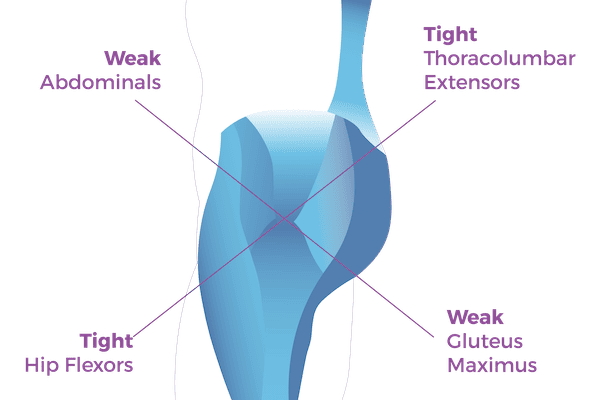
As you can see from the diagram above, the muscles across from the tight, shortened muscles become weak (that’s why it’s called lower cross syndrome).
Over time, this becomes a real issue. The lower back is over arched, which can cause back pain and disk issues. The chronically shortened hip flexors can put our hip joints into a position that eventually can degrade the integrity of the hip joints.
As mentioned above, Lower Cross Syndrome is characterized by certain muscles being overactive. This overactivity results in muscle shortening and tightness. Notably, these muscles often include:
These muscles often become overactive as a result of compensation for other weaker muscles in the body. The tightness of these muscles can lead to an exaggerated lumbar curve and anterior pelvic tilt.
While Lower Cross Syndrome is accountable for certain muscles being overactive, it’s equally responsible for contributing to the underactivity, lengthening, and weakness of others. Some of these weakened muscles include:
In Lower Cross Syndrome, insufficient activation and underuse cause this group of muscles to lack strength, aggravating dysfunctional posture patterns.
The main symptom of Lower Cross Syndrome is back pain. However, some individuals may notice other Lower Cross Syndrome symptoms, such as:
The presence of these symptoms does not necessarily confirm a diagnosis of Lower Cross Syndrome. You (or your client) should always be evaluated by a medical professional for an appropriate assessment and treatment plan before starting any Lower Cross Syndrome yoga practices.

In an ideal world, we would just stop sitting all the time! But in the real world, it can be necessary to be able to sit for long periods of time.
Fortunately, Lower Cross Syndrome can be improved and, in many cases, resolved with a combination of stretches and lifestyle changes:
Understand that each individual’s recovery process will differ. If you’re wondering how to fix Lower Cross Syndrome, keep in mind that what works best for one person may not work for you (or your client). One of the benefits of yoga for Lower Cross Syndrome is that it can be personalized.
Yoga was born out of a meditation tradition. Guess what you do when you meditate all day? You guessed it: sit! This means that the yoga tradition has very reliable and longstanding techniques to prevent sitting from becoming a problem.
Consider these benefits of yoga for Lower Cross Syndrome:
Everyone is different, with their own medical history, health conditions, lifestyle, and goals. That’s why it’s so important to work with a yoga therapist who can develop a personalized and therapeutic approach for you to use yoga for Lower Cross Syndrome.
In general, however, Lower Cross Syndrome yoga techniques will involve strengthening your weak muscles (glutes and abdominals) and stretching your tight muscles (hip flexors and lower back erectors). I’ve shared an example of 8 yoga poses for Lower Cross Syndrome in sequence, which can be practiced in between sitting sessions. Also, feel free to break this sequence up during the day if that’s the only way to fit it in.

A great Lower Cross Syndrome yoga pose to start with is Malasana, also known as the Squat Pose. This posture, when performed right, can help strengthen the gluteal muscles and stretch the groin and hip flexors.
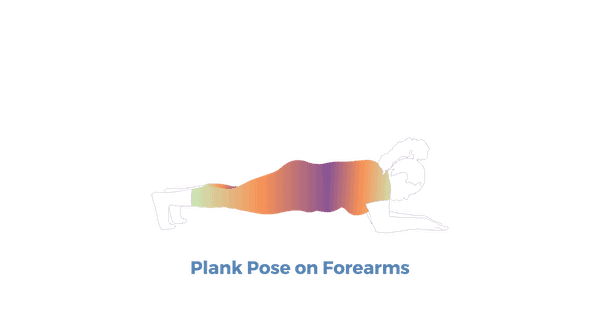
This variation on Plank Pose is a full-body exercise that engages multiple muscle groups at once. Particularly, it is instrumental in strengthening the deep core muscles (transverse abdominis), the exterior abs (rectus abdominis), and the internal obliques, all of which are often weak in people with Lower Cross Syndrome. This pose can help improve strength, endurance, and postural stability, all of which are critical for managing and treating LCS.
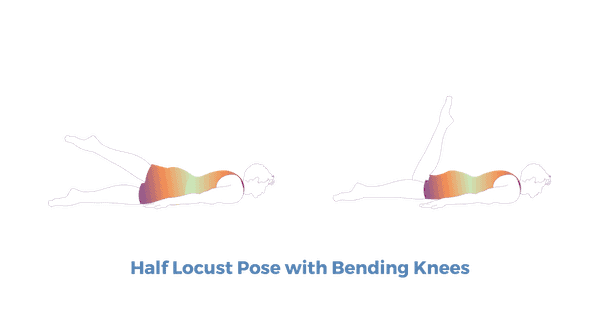
Locust Pose is a prone, back-bending pose that’s excellent for strengthening the back of the body. In particular, it targets the muscles that maintain upright posture—namely, the erector spinae and the multifidus. The pose also stretches the hip flexors, which can be overly tight in those with Lower Cross Syndrome. By lifting and bending one leg at a time in the Half Locust Pose, you target the muscles in your lower back, glutes, and thighs.

Child’s Pose is a restful pose that offers a gentle stretch to the hips, thighs, and ankles while releasing tension in the lower back and neck. It’s an effective pose for alleviating tightness and discomfort stemming from Lower Cross Syndrome.
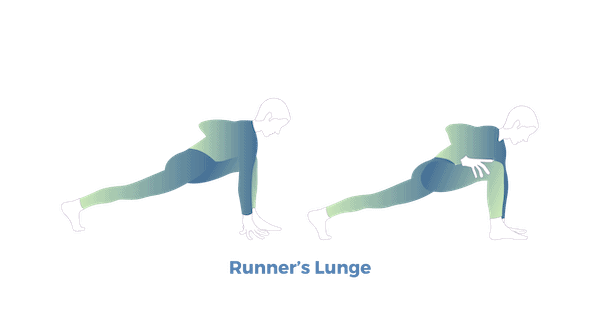
After resting in Child’s Pose, you can use Runner’s Lunge in your yoga for Lower Cross Syndrome sequence to stretch the hip flexors, particularly the psoas, which tends to be tight in those with Lower Cross Syndrome. The pose also helps in strengthening the gluteus muscles, enhancing lower body stability.
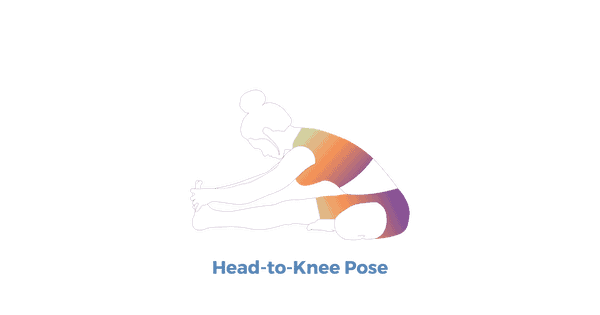
A seated forward bend, Head-to-Knee Pose is another great yoga pose for Lower Cross Syndrome. It enables a deep stretch in the hips, hamstrings, and lower back, where tension often accumulates. By focusing on one side of the body at a time, it helps isolate these muscles for a better stretch.
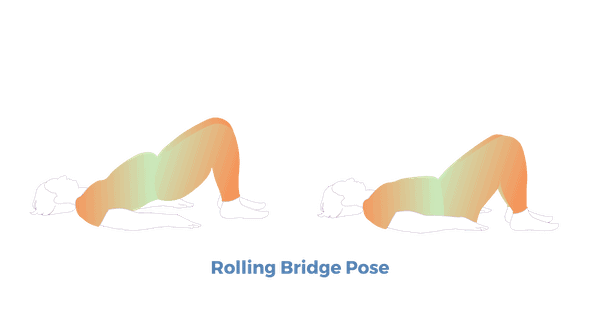
Bridge Pose is a powerful Lower Cross Syndrome yoga pose because it strengthens the back of the body while also stretching the hip flexors and chest. With this rolling variation, you can incorporate more movement and corresponding breath than if you held a stationary Bridge Pose.

Savasana, also known as Corpse Pose, is a common way to close a yoga sequence. It encourages your body to rest and absorb the benefits of the Lower Cross Syndrome yoga poses that came before it. For those with LCS, this can be a great way to reduce muscle tension and increase bodily awareness. Although it may look straightforward and passive, Savasana is an intentional pose that fosters mindfulness, relaxation, and a stronger mind-body connection.
The amount of time it takes to effectively treat and potentially fix Lower Cross Syndrome depends on a variety of factors, including
In my experience, many people can make a lot of progress within 8 weeks of practicing yoga for Lower Cross Syndrome.
It’s important to be patient and persistent. Lower Cross Syndrome is commonly caused by poor habits accumulated over years, and correcting these patterns takes time. The goal should not be to rush through the process but to achieve a sustainable improvement in posture and other supportive habits.
If you experience discomfort trying to sleep with Lower Cross Syndrome, consider sleeping flat on your back if that’s a suitable option for you. This can allow your hip flexors to not be as shortened while you’re sleeping. But this is not necessary in order to treat or overcome LCS.

Are you interested in Lower Cross Syndrome yoga therapy? I have personally helped numerous clients work through this condition, and I also teach my yoga therapy students how to address common issues like this one. Sign up to work online with myself or a yoga therapist I’ve trained if you have LCS, or check out our yoga therapy training if you want to work with LCS clients yourself.
Brandt talks about common questions applicants have about the Breathing Deeply Yoga Therapy Program. Tune in to get the full program details.
Friends in Yoga, The way we perceive the world is a curious thing. Is it on fire or getting better? Are we facing our challenges or shying away from them? Are we functioning from the present or some altered reality based on past experiences? The teachings tell us that reality is ultimately timeless. The vibration […]
There’s no doubt that yoga is gaining popularity, but you may be asking yourself, what is the most popular type of yoga? Where is each type most popular in the U.S. and around the world? And for those who are interested in trying it themselves, how can you practice these styles of yoga safely? For […]
Friends in Yoga, Sitting on a cushion, taking a yoga class, chanting a mantra before your morning coffee…no one would call these radical acts. They are small choices that we make to better ourselves. The motivation to practice often takes form by our desire to be healthier, to be more focused, to connect with our […]